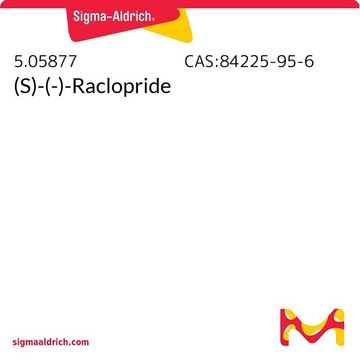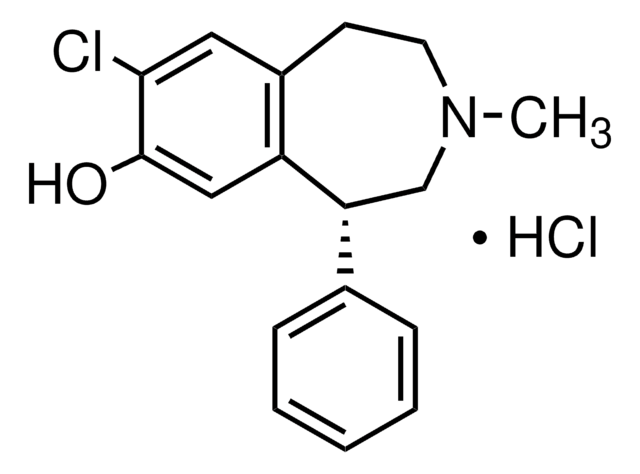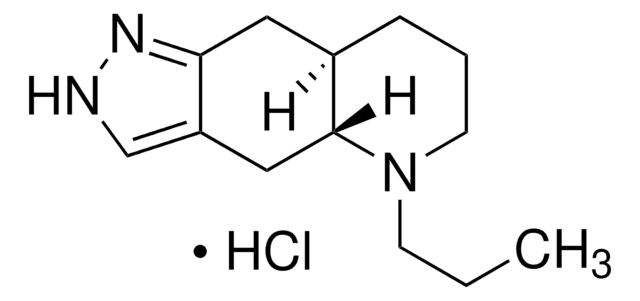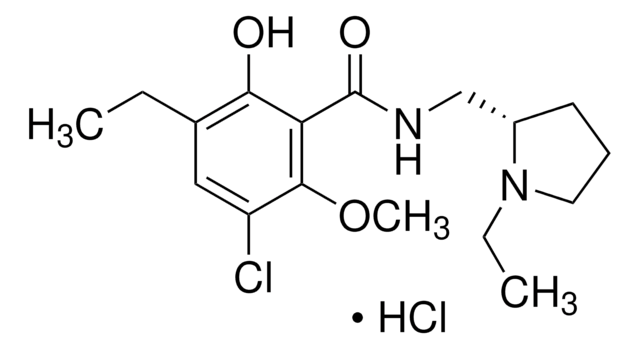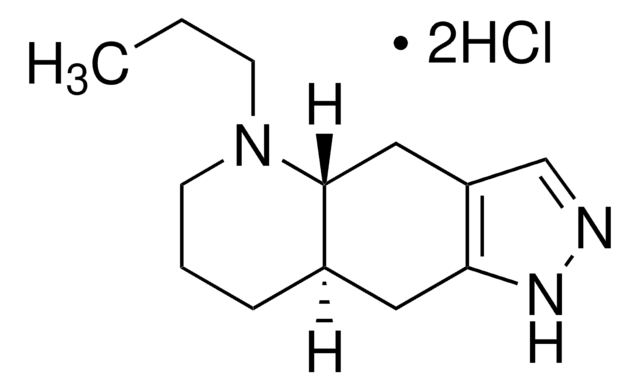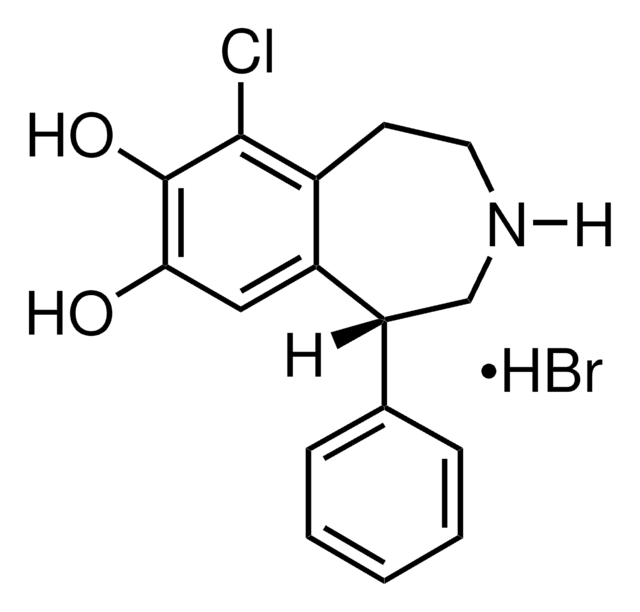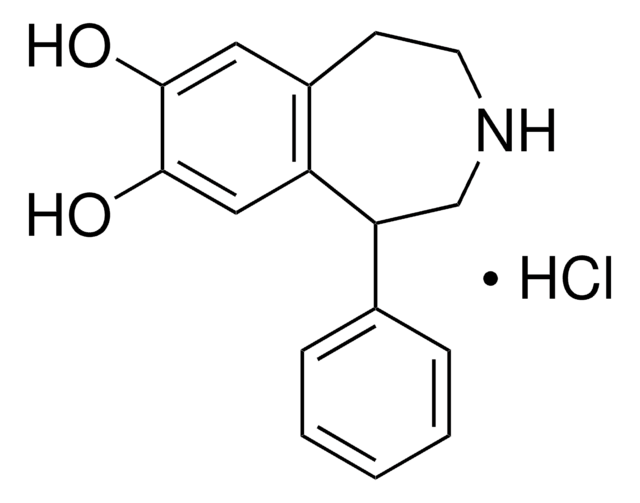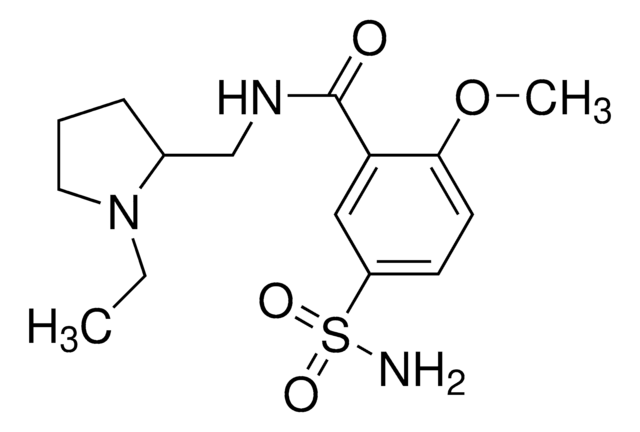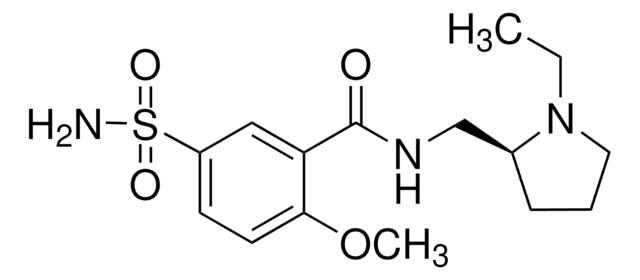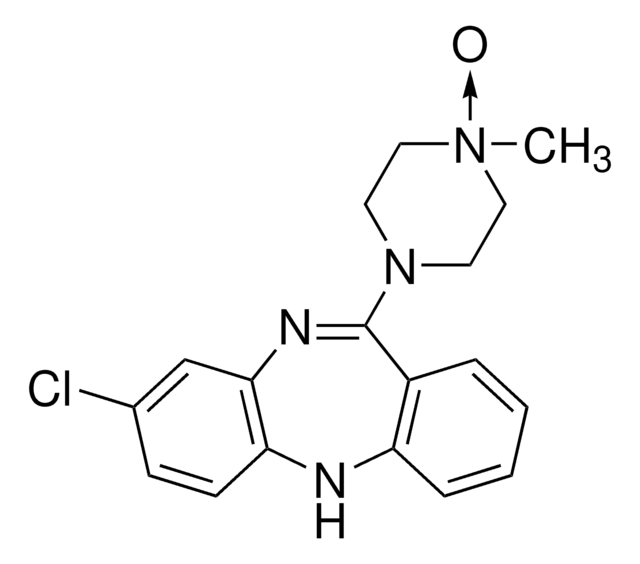R121
S(−)-Raclopride (+)-tartrate salt
>97%, solid
Sinónimos:
3,5-Dichloro-N-(1-ethylpyrrolidin-2-ylmethyl)-2-hydroxy-6-methoxybenzamide (+)-tartrate salt
About This Item
Productos recomendados
Quality Level
assay
>97%
form
solid
color
white
solubility
H2O: 89 mg/mL
SMILES string
O[C@H]([C@@H](O)C(O)=O)C(O)=O.CCN1CCC[C@H]1CNC(=O)c2c(O)c(Cl)cc(Cl)c2OC
InChI
1S/C15H20Cl2N2O3.C4H6O6/c1-3-19-6-4-5-9(19)8-18-15(21)12-13(20)10(16)7-11(17)14(12)22-2;5-1(3(7)8)2(6)4(9)10/h7,9,20H,3-6,8H2,1-2H3,(H,18,21);1-2,5-6H,(H,7,8)(H,9,10)/t9-;1-,2-/m01/s1
InChI key
QULBVRZTKPQGCR-NDAAPVSOSA-N
Gene Information
human ... DRD2(1813)
Application
- to study the role of the D2 receptor in mediating ventrolateral PAG (vlPAG)/dorsal raphe dopaminergic antinociceptive effect in animals
- in pharmacological and behavioral studies performed with Thap1 null mice
- to determine the relationship between Ca2+ transients and dopamine neuron activity in rats
Biochem/physiol Actions
Packaging
Caution
Storage Class
11 - Combustible Solids
wgk_germany
WGK 3
flash_point_f
Not applicable
flash_point_c
Not applicable
ppe
Eyeshields, Gloves, type N95 (US)
Elija entre una de las versiones más recientes:
¿Ya tiene este producto?
Encuentre la documentación para los productos que ha comprado recientemente en la Biblioteca de documentos.
Los clientes también vieron
Nuestro equipo de científicos tiene experiencia en todas las áreas de investigación: Ciencias de la vida, Ciencia de los materiales, Síntesis química, Cromatografía, Analítica y muchas otras.
Póngase en contacto con el Servicio técnico